Abstract
1. Protein-depleted rats are resistant to the lethal effects of carbon tetrachloride. The LD50 is 6·4ml./kg. in stock rats and 14·7ml./kg. in rats fed on protein-free diets. 2. Protein-depleted rats are resistant to carbon tetrachloride in its effect on the liver as judged by histology, accumulation of liver water, and plasma enzyme and bilirubin measurement. 3. The protection is present after feeding rats on a no-protein diet for 4 days. It is present after feeding rats on a 3%-casein diet, and partly found after feeding rats on a 6%-casein diet. 4. The activities of the microsomal enzymes that demethylate Pyramidon and hydroxylate benzopyrene in the liver fall by over 80% in rats fed on the no-protein diet for 4 days or more, or in rats fed on a 3%-casein diet. A 50% fall is found in rats fed on a 6%-casein diet. 5. A single dose of DDT or three doses of phenobarbitone cause increased microsomal enzyme activity in protein-depleted rats. 6. The animals are then sensitive to the lethal and liver-damaging effects of carbon tetrachloride. 7. DDT dosage also leads to increased sensitivity to carbon tetrachloride in rats fed on stock diets. 8. These findings support the hypothesis that carbon tetrachloride is metabolized by microsomal enzymes to form the true toxic compound.
Full text
PDF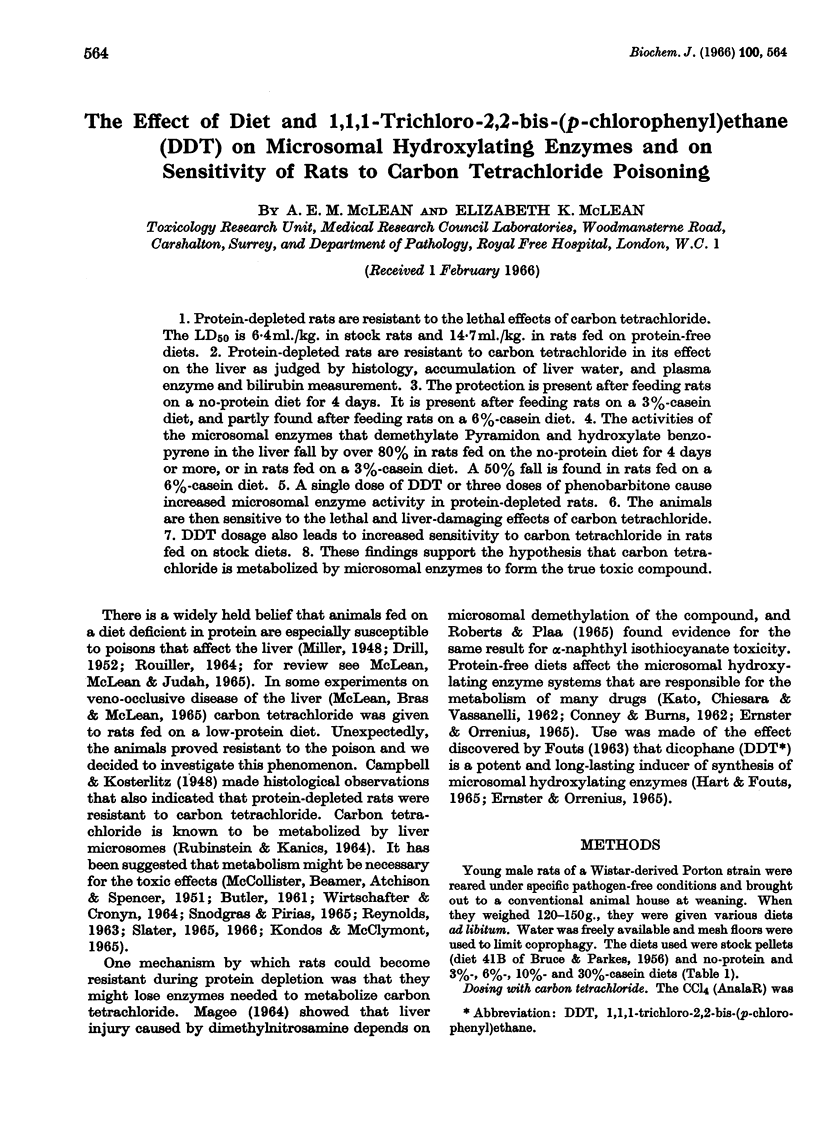
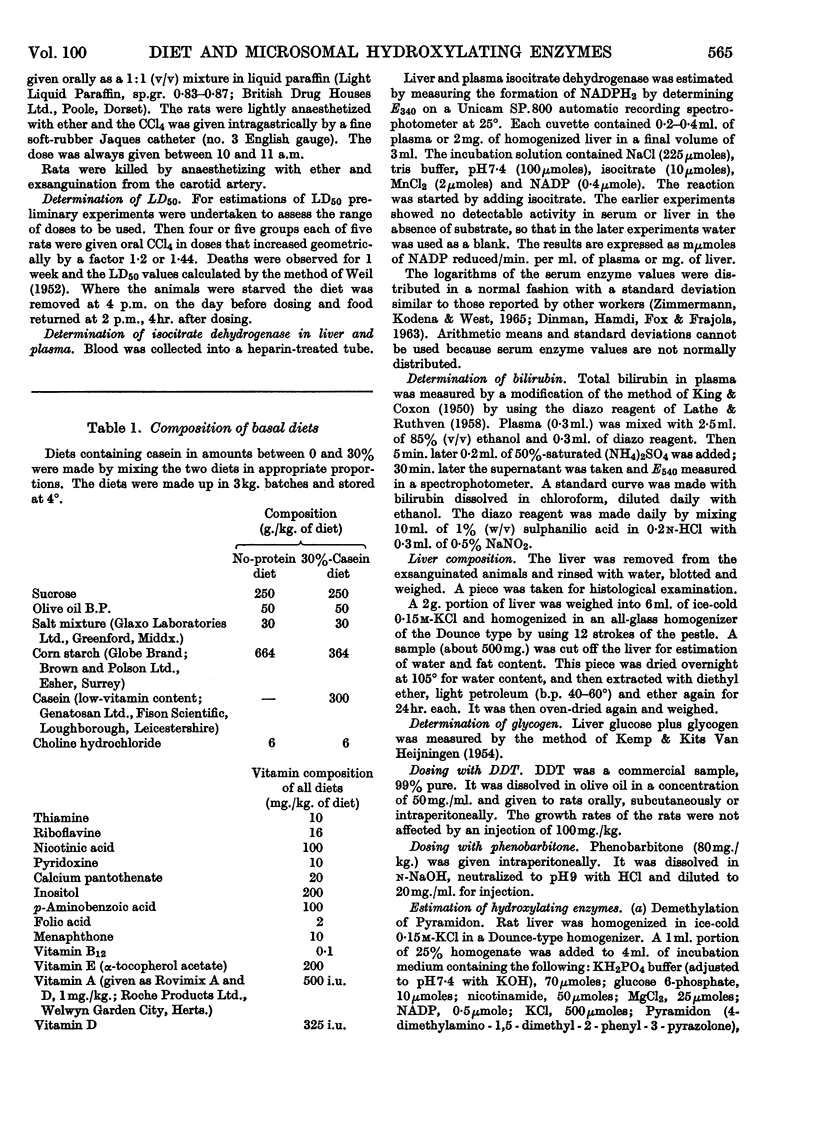
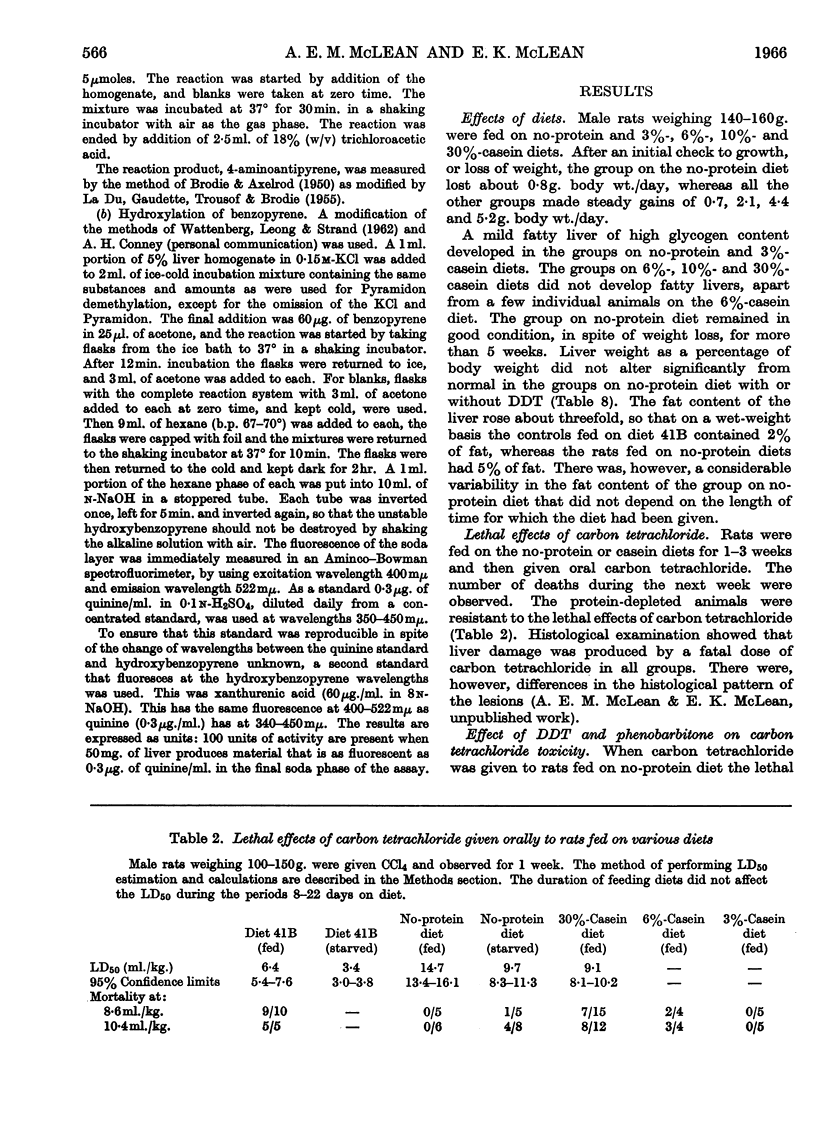
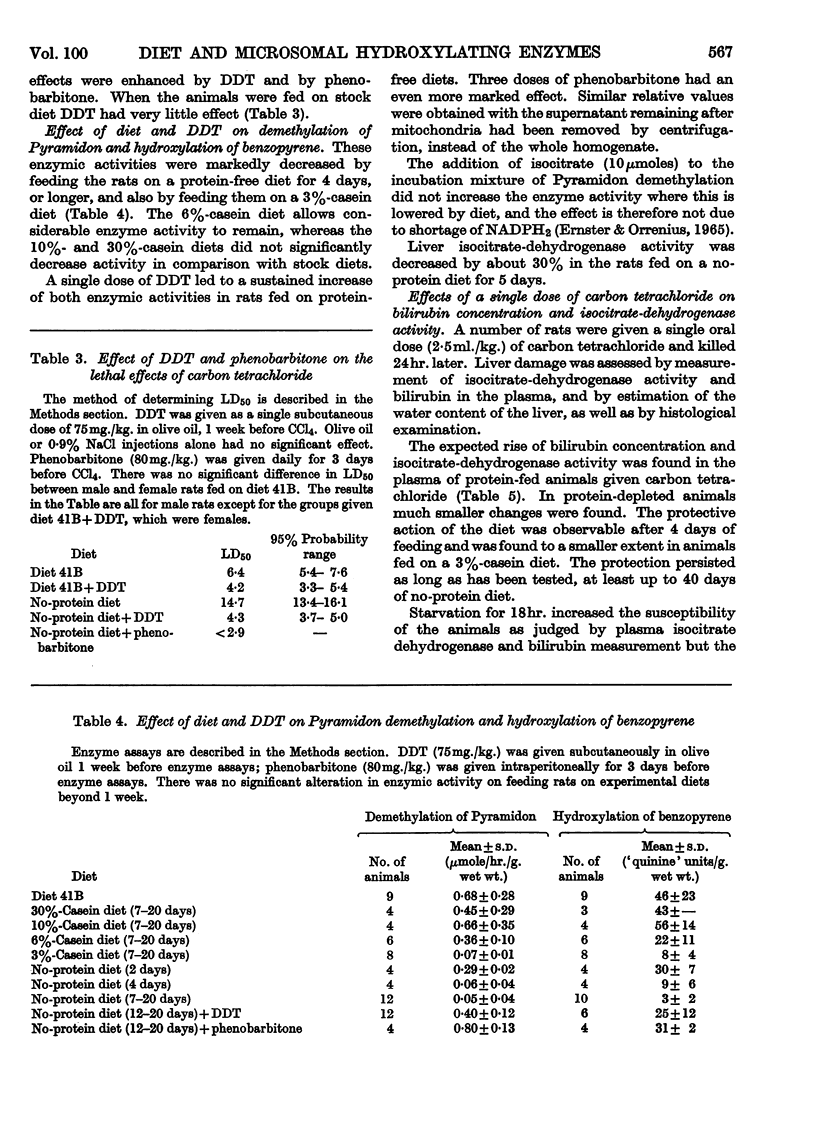
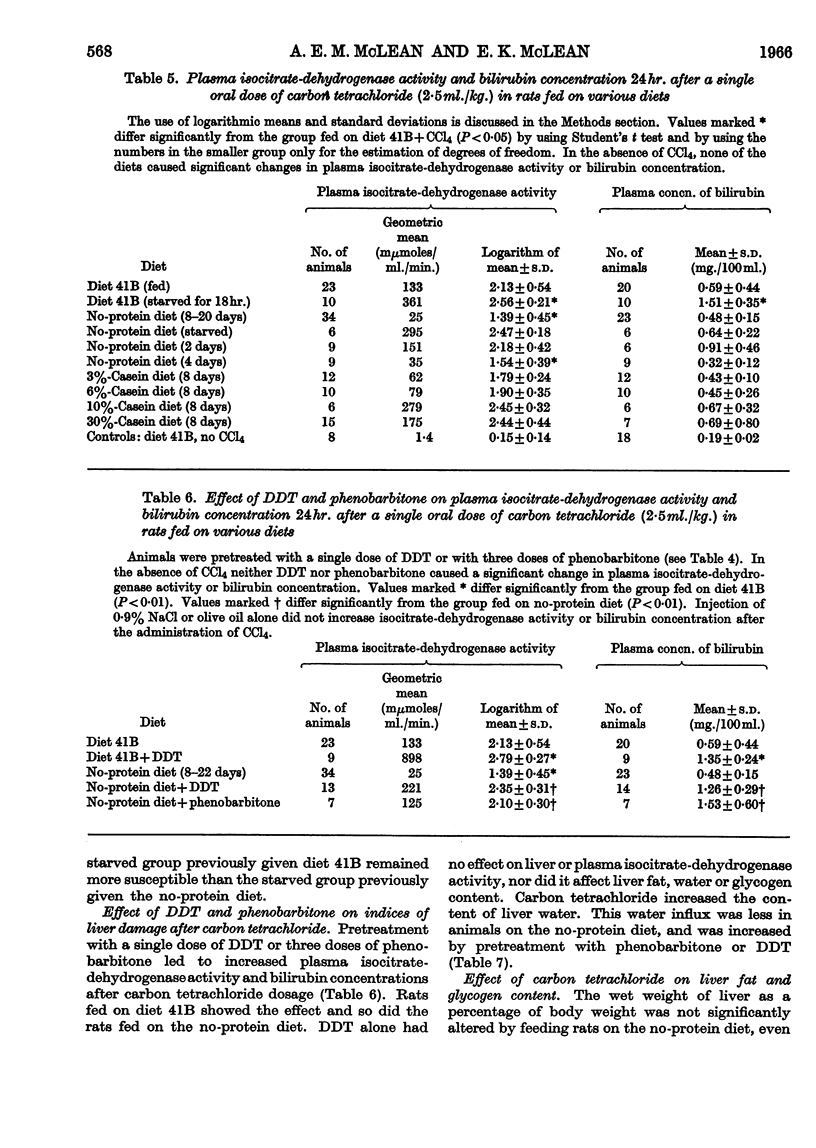
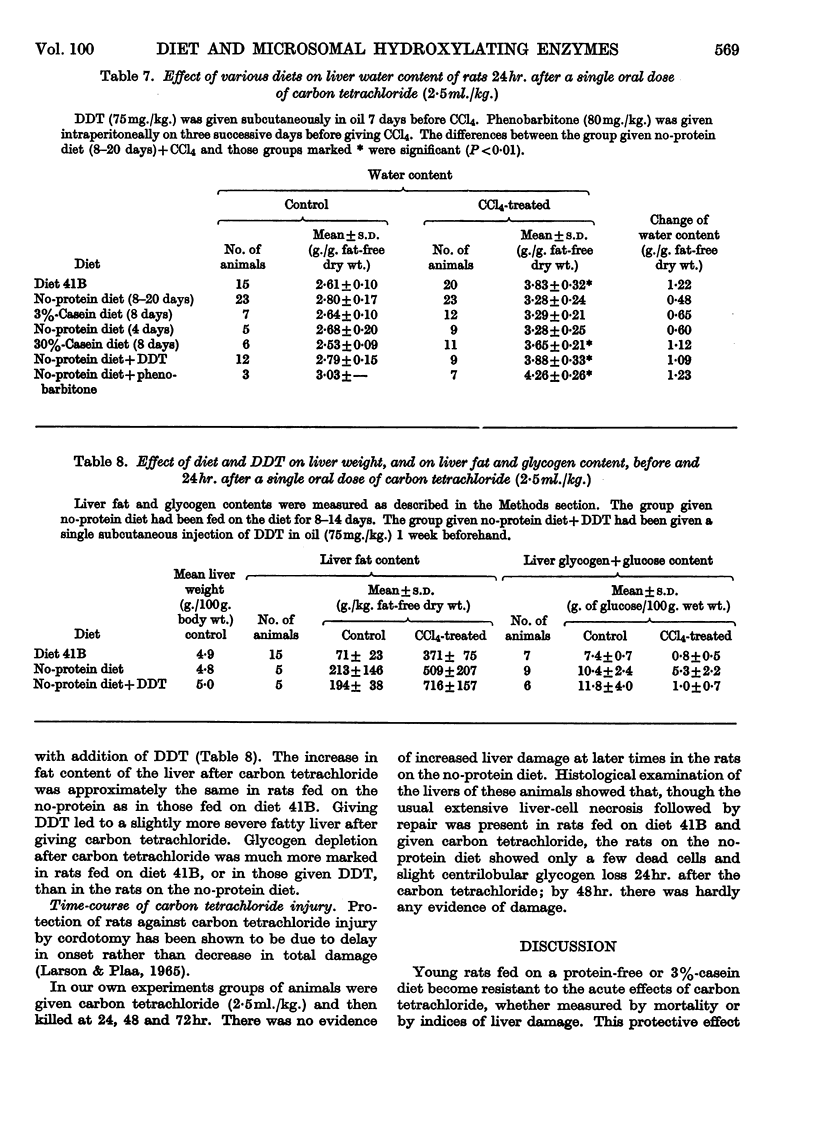
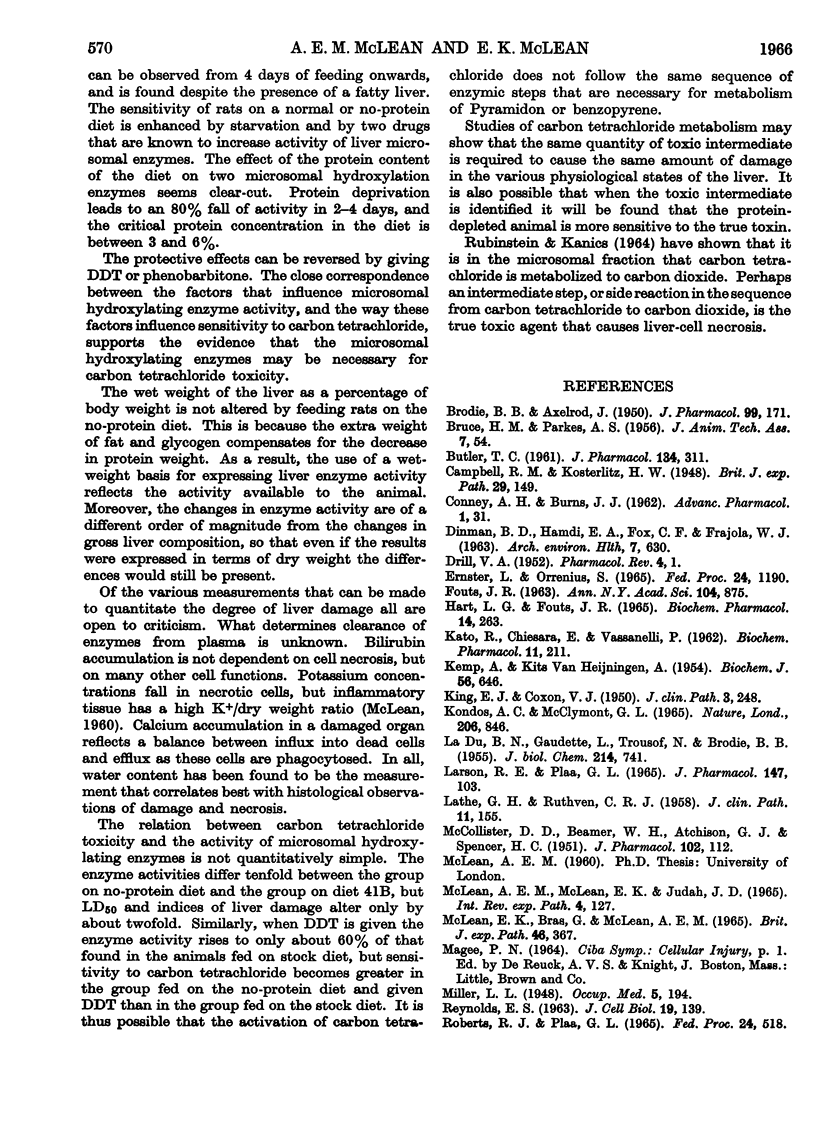
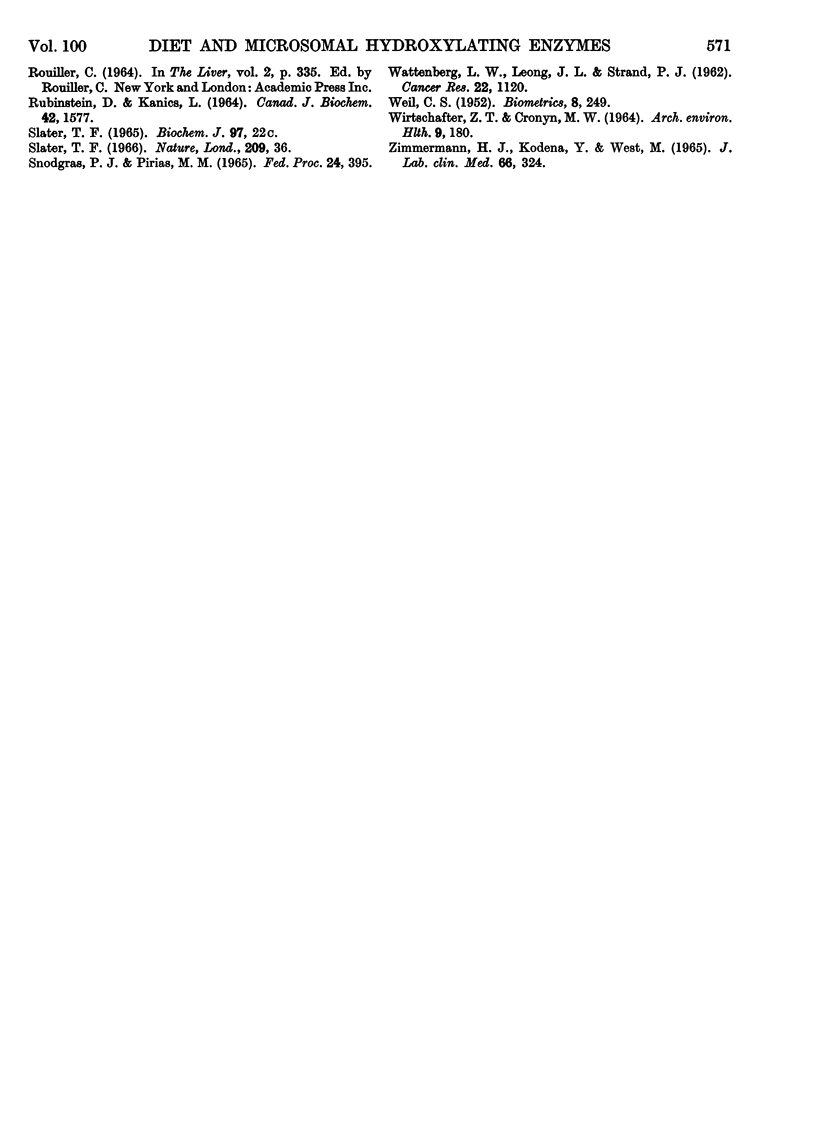
Selected References
These references are in PubMed. This may not be the complete list of references from this article.
- BRODIE B. B., AXELROD J. The fate of aminopyrine (pyramidon) in man and methods for the estimation of aminopyrine and its metabolites in biological material. J Pharmacol Exp Ther. 1950 Jun;99(2):171–184. [PubMed] [Google Scholar]
- BUTLER T. C. Reduction of carbon tetrachloride in vivo and reduction of carbon tetrachloride and chloroform in vitro by tissues and tissue constituents. J Pharmacol Exp Ther. 1961 Dec;134:311–319. [PubMed] [Google Scholar]
- DINMAN B. D., HAMDI E. A., FOX C. F., FRAJOLA W. J. CCI4 TOXICITY. III. HEPATO-STRUCTURAL AND ENZYMATIC CHANGE. Arch Environ Health. 1963 Dec;7:630–646. doi: 10.1080/00039896.1963.10663595. [DOI] [PubMed] [Google Scholar]
- DRILL V. A. Hepatotoxic agents; mechanism of action and dietary interrelationship. Pharmacol Rev. 1952 Mar;4(1):1–42. [PubMed] [Google Scholar]
- Ernster L., Orrenius S. Substrate-induced synthesis of the hydroxylating enzyme system of liver microsomes. Fed Proc. 1965 Sep-Oct;24(5):1190–1199. [PubMed] [Google Scholar]
- KATO R., CHIESARA E., VASSANELLI P. Factors influencing induction of hepatic microsomal drug-metabolizing enzymes. Biochem Pharmacol. 1962 Mar;11:211–220. doi: 10.1016/0006-2952(62)90076-x. [DOI] [PubMed] [Google Scholar]
- KEMP A., VAN HEIJNINGEN A. J. M. K. A colorimetric micro-method for the determination of glycogen in tissues. Biochem J. 1954 Apr;56(4):646–648. doi: 10.1042/bj0560646. [DOI] [PMC free article] [PubMed] [Google Scholar]
- King E. J., Coxon R. V. Determination of Bilirubin with Precipitation of the Plasma Proteins. J Clin Pathol. 1950 Aug;3(3):248–259. doi: 10.1136/jcp.3.3.248. [DOI] [PMC free article] [PubMed] [Google Scholar]
- Kondos A. C., McClymont G. L. Indirect anthelmintic action of carbon tetrachloride against Fasciola hepatica. Nature. 1965 May 22;206(4986):846–847. doi: 10.1038/206846b0. [DOI] [PubMed] [Google Scholar]
- LA DU B. N., GAUDETTE L., TROUSOF N., BRODIE B. B. Enzymatic dealkylation of aminopyrine (pyramidon) and other alkylamines. J Biol Chem. 1955 Jun;214(2):741–745. [PubMed] [Google Scholar]
- LARSON R. E., PLAA G. L. A CORRELATION OF THE EFFECTS OF CERVICAL CORDOTOMY, HYPOTHERMIA AND CATECHOLAMINES ON CARBON TETRACHLORIDE-INDUCED HEPATIC NECROSIS. J Pharmacol Exp Ther. 1965 Jan;147:103–111. [PubMed] [Google Scholar]
- LATHE G. H., RUTHVEN C. R. Factors affecting the rate of coupling of bilirubin and conjugated bilirubin in the van de Bergh reaction. J Clin Pathol. 1958 Mar;11(2):155–161. doi: 10.1136/jcp.11.2.155. [DOI] [PMC free article] [PubMed] [Google Scholar]
- McCOLLISTER D. D., BEAMER W. H., ATCHISON G. J., SPENCER H. C. The absorption, distribution and elimination of radioactive carbon tetrachloride by monkeys upon exposure to low vapor concentrations. J Pharmacol Exp Ther. 1951 Jun;102(2):112–124. [PubMed] [Google Scholar]
- McLean A. E., McLean E., Judah J. D. Cellular necrosis in the liver induced and modified by drugs. Int Rev Exp Pathol. 1965;4:127–157. [PubMed] [Google Scholar]
- McLean E., Bras G., McLean A. E. Venous occlusions in the liver following dimethylnitrosamine. Br J Exp Pathol. 1965 Aug;46(4):367–369. [PMC free article] [PubMed] [Google Scholar]
- REYNOLDS E. S. LIVER PARENCHYMAL CELL INJURY. I. INITIAL ALTERATIONS OF THE CELL FOLLOWING POISONING WITH CARBON TETRACHLORIDE. J Cell Biol. 1963 Oct;19:139–157. doi: 10.1083/jcb.19.1.139. [DOI] [PMC free article] [PubMed] [Google Scholar]
- RUBINSTEIN D., KANICS L. THE CONVERSION OF CARBON TETRACHLORIDE AND CHLOROFORM TO CARBON DIOXIDE BY RAT LIVER HOMOGENATES. Can J Biochem. 1964 Nov;42:1577–1585. doi: 10.1139/o64-169. [DOI] [PubMed] [Google Scholar]
- Slater T. F. Necrogenic action of carbon tetrachloride in the rat: a speculative mechanism based on activation. Nature. 1966 Jan 1;209(5018):36–40. doi: 10.1038/209036a0. [DOI] [PubMed] [Google Scholar]
- WATTENBERG L. W., LEONG J. L., STRAND P. J. Benzpyrene hydroxylase activity in the gastrointestinal tract. Cancer Res. 1962 Oct;22:1120–1125. [PubMed] [Google Scholar]
- WIRTSCHAFTER Z. T., CRONYN M. W. RELATIVE HEPATOTOXICITY: PENTANE, TRICHLOROETHYLENE, BENZENE, CARBON TETRACHLORIDE. Arch Environ Health. 1964 Aug;9:180–185. doi: 10.1080/00039896.1964.10663817. [DOI] [PubMed] [Google Scholar]
- ZIMMERMAN H. J., KODERA Y., WEST M. EFFECTS OF CARBON TETRACHLORIDE POISONING ON THE PLASMA LEVELS OF CYTOPLASMIC AND MITOCHONDRIAL ENZYMES IN ANIMALS WITH NUTRITIONAL FATTY METAMORPHOSIS. J Lab Clin Med. 1965 Aug;66:324–333. [PubMed] [Google Scholar]


